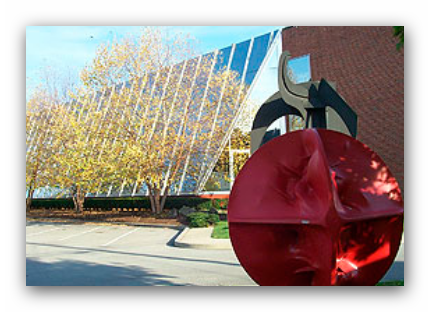Apr 22 2017 - Jul 30 2017
Buffalo, NY
The Language of Objects is a three-person exhibition featuring artists Matthew Craven, Brendan Fernandes, and Alyssa Phoebus Mumtaz. [....] This exhibition showcases artists who appropriate cultural objects in their practice. Referencing the Cravens World Collection—a collection of archaeological and ethnographic objects from around the world dating as far back as 4,500 BC on view in the Cravens open storage room—each of the three artists work across geographic borders and in a variety of mediums. The artists create pathways that add to the history of the objects they select. Each artist is working with a collection of objects, and enlist them in the gallery space to construct new narratives. Philosopher Theodor Adorno argued that museums and mausoleums were within the same realm and that objects, once inside a museum, are removed from the flow of culture where new connections can be established. The artists in this exhibition dissuade this theory by continuing to spotlight new narratives through the varied connections with cultural objects and diverse artistic processes.
Matthew Craven sources his images from out of print textbooks that he collages on the backs of vintage movie posters. The work is analog; the artist purchases multiples of books in order to utilize the actual printed imagery instead of digital copies. His repetitive use of the object keeps the objects ever-present in his work. His sophisticated eye combines repeated imagery such as Greek vases, Roman busts, African wood carvings and Neolithic tools and sometimes incorporates them with hand-drawn patterns that exist across cultures and time periods. With many of the fundamental shapes he uses often unspecific to place, his collages are scattered across millennia, compressing time and allowing for diverse histories to intertwine.
Brendan Fernandes explores notions of identity relating to his unique cultural background as a Canadian artist of Kenyan and Indian descent. While often utilizing African objects that refer to notions of provenance and authenticity, Fernandes’ work also addresses the complex histories of these objects. For this exhibition, the artist will focus specifically on the African masks from the Cravens World Collection, and use these objects to raise questions about their authenticity. As an artist, he is adopting museum techniques of display—installing the original objects on their mounts with documentary photographs of their backs, which refer to how masks are tested for authenticity by investigating the markings and secretions from past wearers. This exhibition will demonstrate his interest in the disembodied object. Fernandes will photograph the masks with ballet dancers addressing them formally and bring them back into play by having dancers wear 3-D printed replicas in performance.
Alyssa Phoebus Mumtaz’s work is influenced greatly by her personal connection and frequent travels to South Asia. Using archeology and the life of artifacts as a point of departure, Phoebus Mumtaz’s work is graphically focused and steeped in symbolism. The three series of works in this exhibition all touch upon the body, but similar to Fernandes’ installation of masks on mounts—each of Phoebus Mumtaz’s works confront the missing body in space. In Loom Drawings, the artist abstracts the loom into a flattened object, presenting it in various states of weaving and unraveling. The luminous prayer beads in Constellations are arranged in a series of graceful forms on hand-made paper, yet without the hands that hold them close. Finally in the Travelers series, what seem to be Asian-inspired dresses and robes composed onto handwoven tussar silk, float gently off the wall, suggesting the human body could fill the empty space.
Credit: Exhibition overview from museum website.
Whether or not you go, Brendan Fernandes: Lost Bodies offers a fresh approach to re-presenting African artifacts. Starting with the body as a place of knowing, Fernandes offers multiple points of connection that draw upon traditional African textiles, costume and masks, gestures of Western ballet, and elegant, poetic dance choreographies within the museum vault. He invokes a long-absent live-ness and reconsiders selections from two major collections in a set of new video, print and spatial intercessions. Fernande's montage of classical dance and the collected object is concentrated around precise body language that raises questions about the visual and discursive habits that shape understandings of African art within Western museums. Essays by specialists in art performance, dance history and African art explore the implications of Fernandes' intervention with two of Canada s most distinctive collections of African art.
Brendan Fernandes: Lost Bodies

